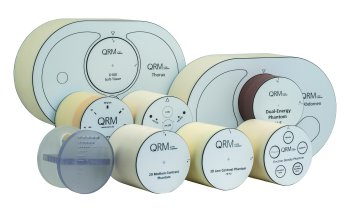The so-called BACH study shows that MR-proANP adds additional information on standard of care in the diagnosis of acute congestive heart failure. The use of PCT (procalcitonin) together with MR-proANP supports the differential diagnosis of pneumonia and congestive heart failure .
Patients presenting shortness of breath on arrival at the emergency department (ED) can gain from improved diagnosis allowing physicians to distinguish congestive heart failure patients from those presenting pneumonia.
The Bach study, a worldwide multi-centre study with over 1600 patients, reveals the equivalence of MR-proANP (mid-regional atrial natriuretic peptide) to BNP and NT-proBNP for the diagnosis of patients with acute congestive heart failure (CHF) presenting to the emergency department (ED) with shortness of breath (SOB). Especially in diagnostically challenging big subgroups of patients with obesity (BMI ≥ 30 kg/m2), higher age (≥ 70 years), renal dysfunction or BNP values in the so-called grey zone (≥ 100 and < 500 pg/mL) the BACH study demonstrates additional value for the use of MR-proANP in these patients.
Adding PCT (procalcitonin) as a marker of bacterial infection in a model with basic clinical variables supports the clinically very important differential diagnosis of pneumonia and congestive heart failure in patients presenting to the emergency department with shortness of breath, which was present in a substantial number of the patients having a primary diagnosis of acute CHF.
The study allowed the BACH investigators to conclude:
1) MR-proANP is equally useful as BNP and NT-BNP in the diagnosis of acute heart failure
2) In patient subgroups where BNP and NT-proBNP values prove difficult to interpret, MR-proANP provides additive value for the diagnosis of acute heart failure
3) A combination of the biomarkers PCT and MR-proANP helps in the discrimination of patients with pneumonia in comparison to those with heart failure
“Previous retrospective data from our markers were already very good, but the recent BACH data exceeded our expectations by far”, said Andreas Bergmann PhD, Head of Research & Development and Member of the Board. “It is our goal to provide highly effective biomarker assays to support physicians in the management of severely ill patients. Therefore, the highly positive BACH data are very important and improve daily clinical practice.”
Additional results of the BACH trial are scheduled for publication during the upcoming AHA (American Heart Association) congress in New Orleans in November 2008.
The Bach study was sponsored by B·R·A·H·M·S.
About Shortness of Breath SOB
Shortness of Breath (SOB), also called “breathlessness” or dyspnea is a difficulty in breathing or painful breathing. It is caused by various mechanisms related to different problems in the body. In one’s lifetime, one may experience rare episodes of SOB as part of i.e. high levels of physical activity or at high altitude. However, under normal conditions SOB is commonly a sign of a medical problem. In many cases, the primary problem behind SOB involves heart, lung or neuromuscularabnormalities.
About BACH
In this prospective study more than 1600 patients were enrolled at 15 investigation sites.
The BACH study executive committee was chaired by Prof. Alan Maisel from the Veterans Affairs Medical Center, San Diego, USA, and Prof. Stefan Anker from Charité, Berlin, Germany (s.anker@cachexia.de).
The first primary endpoint was non-inferiority of MR-proANP to BNP for the diagnosis of Acute Heart Failure in patients presenting to the ED with SOB. The second primary endpoint was to test for prognostic superiority of MR-proADM to BNP of patients with heart failure (results on the latter will be shown at the AHA 2008 meeting).
About B·R·A·H·M·S
B·R·A·H·M·S; based in Henningsdorf, Germany, develops and distributes biomarker tests worldwide.









